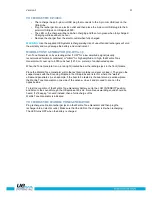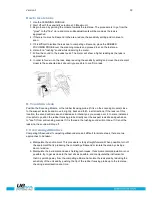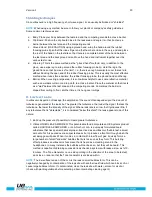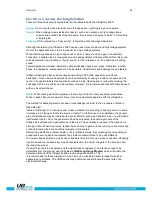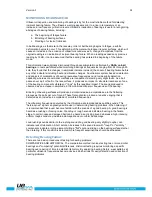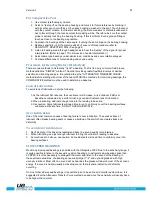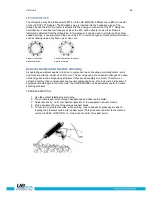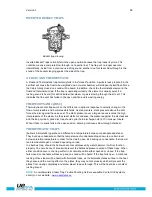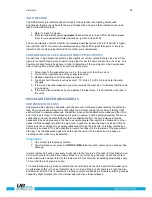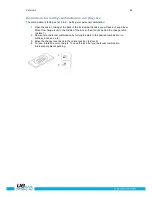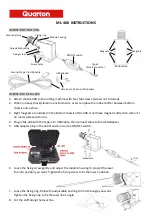
Version 1
31
LEAKAGE BEHIND WALLS
1. Look for water or steam markings such as discoloration, spots in wall or ceiling, etc.
2. If steam, feel for warm spots in wall or ceiling or use a non-contact infrared thermometer.
3. Listen for leak sounds. The louder the signal the closer you are to the leak site.
PARTIAL BLOCKAGE:
When partial blockage exists, a condition similar to that of a bypassing valve is produced. The
partial blockage will generate ultrasonic signals (often produced by turbulence just down stream). If
a partial blockage is suspected, a section of piping should be inspected at various intervals. The
ultrasound generated within the piping will be greatest at the site of the partial blockage.
PROCEDURE:
1. Use stethoscope module.
2. Touch downstream side of suspected area and listen through headset.
3. When necessary, if there is too much sound, reduce sensitivity.
4. Listen for an increase in ultrasound created by the turbulence of partial blockage.
FLOW DIRECTION
Flow in piping increases In intensity as it passes through a restriction or a bend in the piping. As
flow travels upstream, there is an increase in turbulence and therefore the intensity of the ultrasonic
element of that turbulence at the flow restriction. In testing flow direction, the ultrasonic levels will
have greater intensity in the DOWNSTREAM side than in the UPSTREAM side.
PROCEDURE:
1. Use stethoscope mode.
2. Begin test at maximum sensitivity level.
3. Locate a bend in the pipe system (preferably 60 degrees or more).
4. Touch one side of bend and note dB reading.
5. Touch other side of bend and note dB reading.
6. The side with the higher (louder) reading should be the downstream side.
NOTE:
Should it be difficult to observe a sound differential, reduce sensitivity and test as described
until a sonic difference is recognized
.
Содержание Ultraprobe 3000
Страница 1: ...Version 1 1 Ultraprobe 3000 Instruction Manual ...
Страница 6: ...Version 1 6 Ultraprobe 3000 ...

